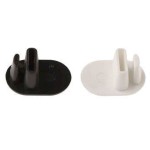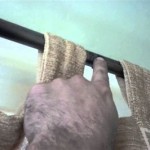How To Get Rid of Little Flies On Your Patio
The presence of small flies on a patio can be a significant nuisance, impacting the enjoyment of outdoor spaces. These tiny insects, often fruit flies, drain flies, or fungus gnats, are attracted to various factors commonly found in patio environments. Understanding the source of the problem and implementing targeted control measures is crucial for effective management.
Identifying the specific type of fly is the first step in determining an effective treatment strategy. Fruit flies are typically drawn to overripe or decaying fruits and vegetables, while drain flies thrive in damp areas with organic matter buildup, such as drains and standing water. Fungus gnats, on the other hand, are often associated with potted plants and damp soil containing decaying organic material. A careful inspection of the patio and surrounding area can help pinpoint the specific culprit.
Once the type of fly is identified, steps can be taken to eliminate their breeding grounds and discourage their presence. This often involves a combination of sanitation practices, trapping methods, and, in some cases, targeted insecticide application.
Eliminating Breeding Grounds and Food Sources
The cornerstone of any effective fly control strategy is the elimination of breeding grounds and food sources. Flies are attracted to environments that offer readily available nourishment and suitable conditions for reproduction. Addressing these underlying factors is essential for long-term management.
For fruit flies, the primary source of attraction is often overripe or decaying fruit. Promptly removing any fallen fruit from trees or bushes in the vicinity of the patio is crucial. Additionally, ensuring that garbage cans are tightly sealed and regularly emptied prevents fruit flies from accessing discarded food scraps. Food waste in compost piles can also attract fruit flies, so proper composting techniques, such as burying food waste beneath a layer of soil or leaves, are recommended. Any spills of sugary drinks or food on the patio should be cleaned up immediately.
Drain flies, as their name suggests, breed in drains and other damp areas where organic matter accumulates. Regular cleaning of drains with a stiff brush and drain cleaner can help to remove the buildup of organic material that serves as a breeding ground. Pouring boiling water down the drain periodically can also help to kill fly larvae. Addressing any leaky pipes or standing water around the patio is also essential for preventing drain fly infestations.
Fungus gnats are commonly found in association with potted plants. These flies thrive in damp soil rich in organic matter. Allowing the top layer of soil in potted plants to dry out between waterings can help to reduce fungus gnat populations. Additionally, removing any decaying leaves or other organic debris from the surface of the soil is recommended. Repotting plants with fresh, sterile potting mix can also help to eliminate fungus gnat larvae and eggs.
Beyond specific fly types, general sanitation practices are important for minimizing fly populations. Regularly sweeping or hosing down the patio to remove food crumbs, spills, and other debris can help to reduce the overall attractiveness of the area to flies. Keeping pet food and water bowls clean and free of spilled food is also important. Consider using mosquito netting or screens around the patio to create a physical barrier that prevents flies from entering the space.
Utilizing Trapping Methods
Trapping methods can be an effective way to reduce fly populations on a patio. Traps work by attracting flies to a specific location and then preventing them from escaping. Various types of traps are available, each designed to target specific types of flies.
For fruit flies, a simple and effective trap can be made using a jar or container with a small amount of apple cider vinegar or wine in the bottom. Adding a few drops of dish soap to the liquid helps to break the surface tension and trap the flies. A paper cone can be placed in the opening of the jar to funnel flies into the trap. Alternatively, commercially available fruit fly traps can be purchased.
Drain flies can be trapped using sticky traps placed near drains or other areas where they are commonly seen. These traps consist of a sticky surface that captures flies as they land on it. Periodically replacing the sticky traps is necessary to maintain their effectiveness. Another type of drain fly trap involves coating the inside of the drainpipe with a thin layer of petroleum jelly. Drain fly larvae that crawl up the pipe will become stuck in the petroleum jelly and die.
Fungus gnats can be trapped using yellow sticky traps placed near potted plants. Fungus gnats are attracted to the color yellow, and they will become stuck to the traps as they fly near the plants. Replacing the sticky traps regularly is necessary to maintain their effectiveness. Another method involves using potato pieces as bait. Burying small pieces of potato just below the surface of the soil in potted plants will attract fungus gnat larvae, which will feed on the potato. After a few days, the potato pieces can be removed and discarded, along with the larvae.
Electronic insect traps, also known as bug zappers, can be used to attract and kill a wide range of flying insects, including flies. These traps use ultraviolet light to attract insects and then electrocute them when they come into contact with an electrified grid. While bug zappers can be effective at killing some flies, they also kill beneficial insects, such as pollinators. They are also less effective at attracting certain types of flies, such as fruit flies, which are more attracted to fermenting odors.
In addition to these methods, consider using flypaper strips. These are coated with a sticky substance that traps flies upon contact. They are relatively inexpensive and can be hung in areas where flies are prevalent. Replace them regularly once they are covered with flies.
Applying Targeted Insecticides (When Necessary)
While eliminating breeding grounds and using trapping methods are often sufficient to control fly populations, in some cases, targeted insecticides may be necessary. Insecticides should be used judiciously and in accordance with label instructions to minimize the risk of harm to humans, pets, and beneficial insects. It is important to identify the specific type of fly before applying any insecticide to ensure that the product is effective.
For fruit flies, insecticides containing pyrethrins or permethrin can be used to control adult populations. These insecticides can be applied as a space spray or as a residual treatment to surfaces where flies are likely to land. It is important to follow label instructions carefully and to avoid spraying directly on food or food preparation surfaces.
Drain flies can be controlled using insecticides containing pyrethrins or Bacillus thuringiensis israelensis (Bti). Pyrethrins can be applied as a space spray to kill adult drain flies, while Bti can be poured down the drain to kill drain fly larvae. Bti is a biological insecticide that is safe for humans and pets.
Fungus gnats can be controlled using insecticides containing pyrethrins, permethrin, or Bti. Pyrethrins or permethrin can be applied as a soil drench to kill fungus gnat larvae, while Bti can be mixed with water and used to water potted plants. Another option is to use insecticidal soap, which can be sprayed on plants to kill adult fungus gnats.
When using insecticides, it is important to wear appropriate protective equipment, such as gloves and a mask. Avoid spraying insecticides near food or water sources, and keep children and pets away from treated areas until the insecticide has dried. Always read and follow label instructions carefully to ensure safe and effective use.
Before resorting to chemical insecticides, consider using natural or organic alternatives. For example, diatomaceous earth (DE) is a natural insecticide that can be used to control a variety of pests, including flies. DE is made from the fossilized remains of diatoms, and it works by dehydrating insects. It can be sprinkled around potted plants or in areas where flies are prevalent.
Another natural insecticide is neem oil, which is extracted from the seeds of the neem tree. Neem oil can be used to control a variety of pests, including flies, by disrupting their growth and reproduction. It can be applied as a foliar spray or as a soil drench.
It is important to note that insecticides should be used as a last resort, after other control methods have been tried. By eliminating breeding grounds, using trapping methods, and implementing good sanitation practices, it is often possible to control fly populations without the need for insecticides.
Regular monitoring of the patio area is crucial for detecting fly infestations early on. Early detection allows for prompt implementation of control measures, preventing populations from escalating and becoming more difficult to manage. Consistent application of the strategies outlined above will contribute to a fly-free and enjoyable patio environment.

How To Get Rid Of Flies On Your Outdoor Patio

How To Keep Bugs Off Your Patio Turf Factory

How Do You Get Rid Of Flies Outside Forbes Home
:max_bytes(150000):strip_icc()/getting-rid-of-flies-outdoor-2656268_FINAL-729e4e7d8cd641dc9ccfaa659d73c98e.png?strip=all)
How To Get Rid Of Flies Outside On Porch Or In Backyard

How To Get Rid Of Flies On My Porch Your Patio
:max_bytes(150000):strip_icc()/getting-rid-of-flies-outdoor-2656268-hero-6a86867fc95d476da9d4a75133ca4c58.jpg?strip=all)
How To Get Rid Of Flies Outside On Porch Or In Backyard

How To Get Rid Of Flies On My Porch Your Patio

How To Get Rid Of Flies Outside Quick Easy Methods

How To Rid Of Drain Flies Forbes Home

How To Get Rid Of Flies Outside Quick Easy Methods








